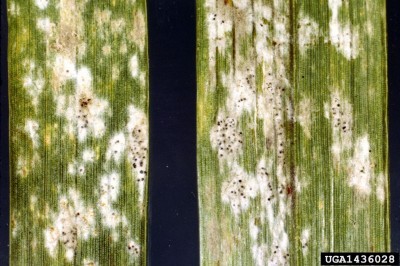






Powdery mildew disease in lawns is usually the result of trying to grow grass in a poor location. Caused by a fungus, the first symptoms are light spots on the blades of grass that may go unnoticed. As the disease progresses, you’ll see white patches that look as though they have been sprinkled with talcum powder. Let’s take a closer look at powdery mildew grass disease and how to control powdery mildew in lawns.
When your grass has white powder, fungicides for powdery mildew treatment do a good job of temporarily eliminating the symptoms, but the disease returns if the growing conditions don’t improve. Grass is a sun-loving plant that grows best in open locations with good air circulation and plenty of light.
Powdery mildew grass disease takes hold in shady locations with little air movement. Watering late in the evening, so that the grass doesn’t have time to dry before nightfall, further encourages this disease.
Control powdery mildew in lawns by opening up the area to better air movement and more sunlight. To reduce shade, prune or remove trees and shrubs that shade the grass. If this isn’t possible, consider the advantages of covering the area with attractive mulch instead of struggling to grow grass in a difficult area. The area under a tree is perfect for a mulch-covered shady retreat with garden seating and potted shade plants.
You can discourage powdery mildew on grass with a few cultural practices aimed at keeping the grass healthy in shady areas, but these methods are only effective in light or partial shade.
Take steps to treat powdery mildew as soon as you discover that your grass has white powder symptoms. If this powdery mildew grass disease is allowed to progress too long, it can spread and result in dead patches in the lawn.
Copyright © www.100flowers.win Botanic Garden All Rights Reserved